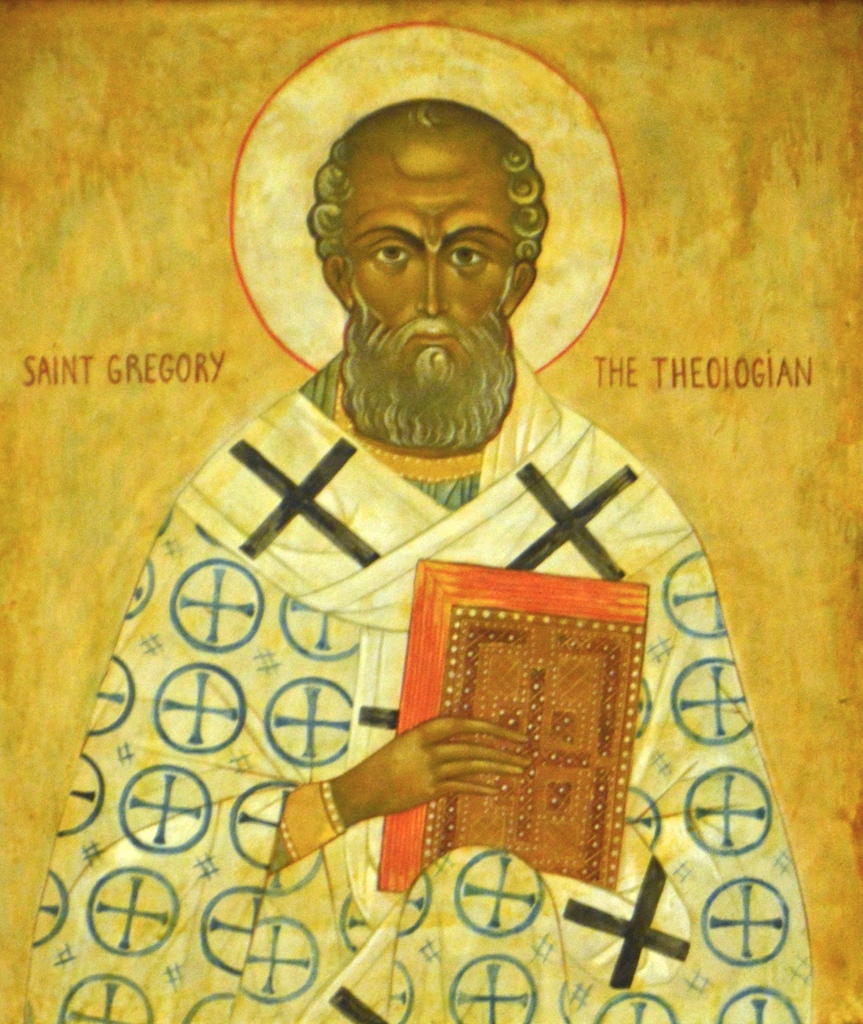
St Gregory the Theologian

https://www.stjohnswarren.com
Church of Serbia – 8/2/18
The fabric of Christendom was woven into its strength and beauty of character by the threads of men such as St. Gregory the Theologian, who became one of the four great doctors of the Church during the 4th century AD, along with Saints Basil the Great, John Chrysostom and Athanasios the Great. He is further remembered as one of the three so-called Cappadocian Fathers, an honour he shares with Sts Basil and Gregory of Nyssa. He is also recognised as the champion of Orthodoxy against the heretical doctrine of Arianism.
The son of a bishop for whom he was named, Gregory was born in Arianzos in Cappadocia, Asia Minor, in 329 AD. He was educated in Caesaria and then in Athens, where he met Basil with whom he became close friends linked in a common resolve to serve Christ. At the suggestion of Basil, the two friends became monastics at a retreat in Pontos, where each embarked on a spiritual journey that was to lead them both to greatness. It was with some degree of reluctance, however, that Gregory left the monastery to be ordained into the priesthood to serve as an assistant to his father, the bishop of Nazianzos. The son’s brilliance as a preacher outshone his father’s. When barely thirty years old, he won acclaim throughout the region as a mighty warrior in the fight against paganism and heresy.
It was largely through the influence of Gregory that his friend Basil was made bishop of Caesaria. In the process, he himself was made bishop of the relatively unimportant town of Sasima, a post he never sought and in which he never served, preferring to remain with his father in Nazianzos. He took over the church of Nazianzos after the death of his father in 374. With the loss of his father, he had a longing to return to asceticism in some retreat, there to meditate, pray, and interpret the Scriptures. He was allowed to go to the seclusion of Seleucia in Isauria, where his tenure as an eremite was short-lived.
After the death of the Arian Emperor Valens, followed closely by the death of Gregory’s friend Basil, Gregory was called to Constantinople. He was to head the reorganisation of the Orthodox Church which had been torn asunder by the heresy of Arianism from within and by the harassment of pagans without. In the course of this holy work, he achieved distinction as an orator, traditionalist, and a crusader that earned him the title of “Theologian” despite the opposition of Maximos the Cynic, who had been set up against him by the bishop of Alexandria.
When the Orthodox Emperor Theodosios came to power in 380 AD, Gregory assumed the direction of the magnificent Church of Aghia Sophia, the most prestigious house of God in all Christendom. While director of this mighty church, Gregory took part in a synod held in Constantinople in 381AD to settle the differences among the prelates of the Church. Known as the Second Ecumenical Synod, it resolved the issues and voted to accept Gregory as patriarch of Constantinople. It further added its official support to the Nicene doctrine which was championed at the First Synod in Nicaea.
For as long as he held the post of spiritual leader of Orthodoxy the gallant Gregory served with honour and dignity. Moreover, he was the instrument of God in unifying the Church into a cohesive unit that could withstand any internal or external pressure. He grew weary of the personal attacks that are the occupational hazard of a patriarch and after a moving farewell address, he retired to live out his days in meditation, writing, and prayer. He died 25 January 388 AD.
from Orthodox Saints, v. 1
by Fr George Poulos, Holy Cross Orthodox Press

480224 686941Sewing Machines […]any time to read or go to the content or maybe internet websites we certainly have associated with[…] 692557